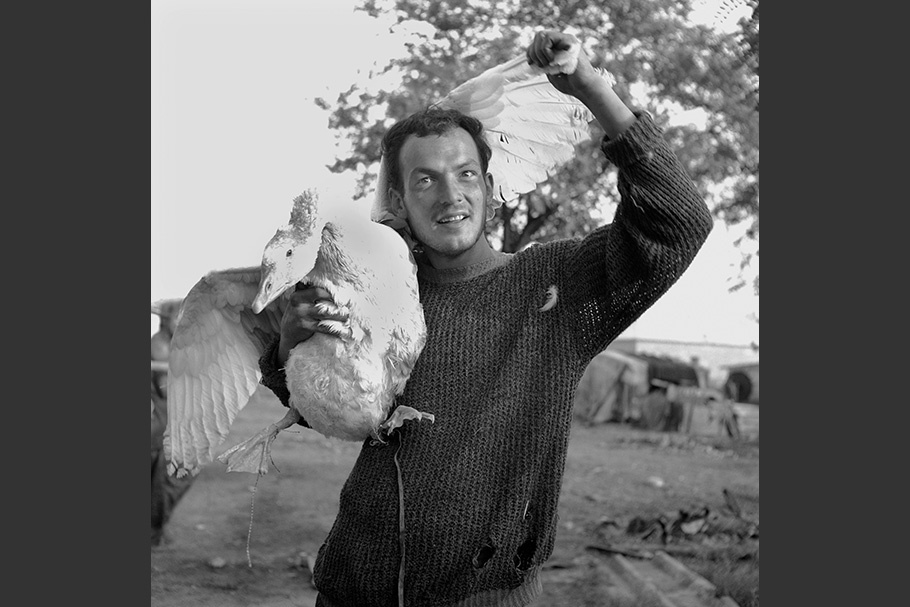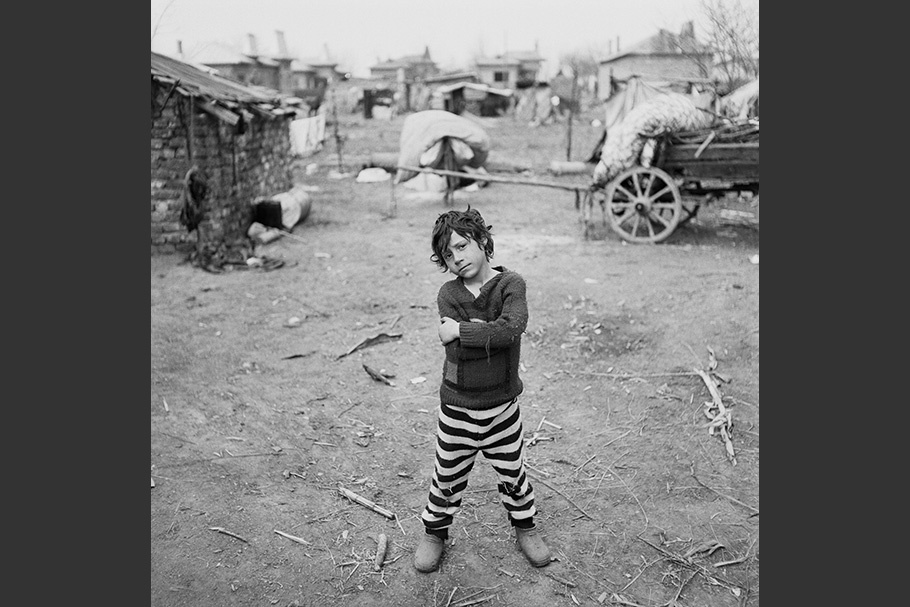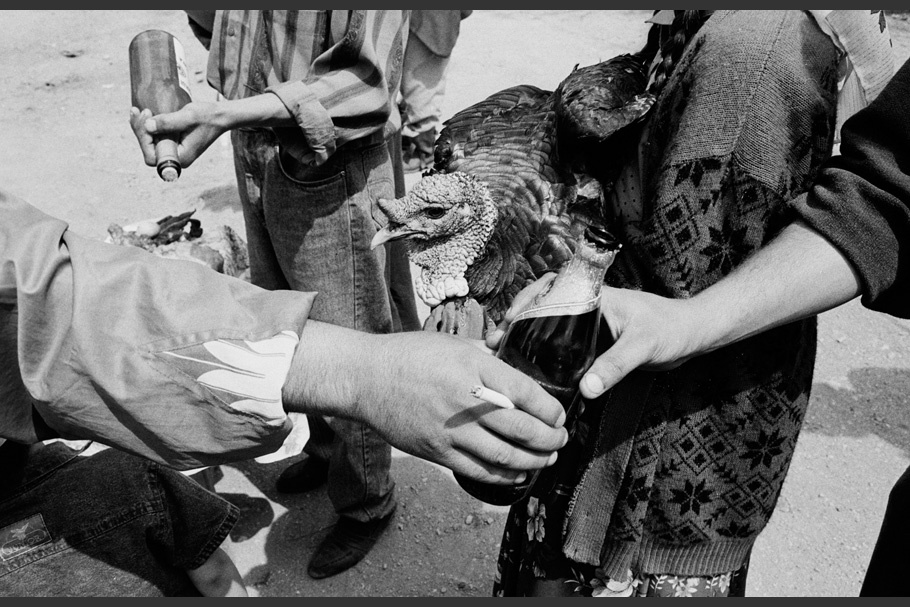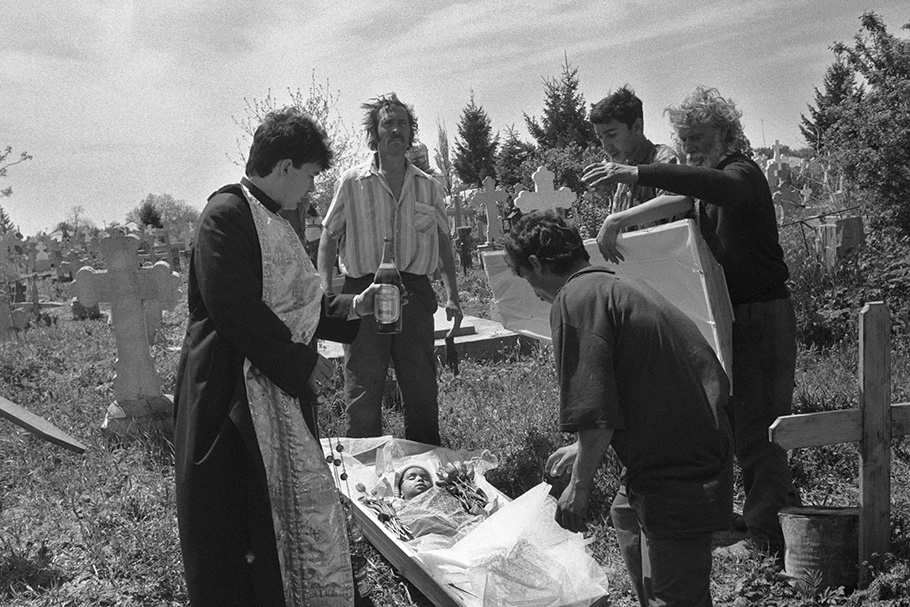19980708-suttonhibbert-mw01-collection-001

Romanian worker employed by a Roma family.
19980708-suttonhibbert-mw01-collection-002

Sintesti, Romania.
19980708-suttonhibbert-mw01-collection-003

Romanian Orthodox Easter is the most important festival of the year for the Sintesti Roma camp. It is in the weeks immediately following these three-day-long celebrations that the community stages their second most important round of parties—those for any marriages taking place within the camp.
19980708-suttonhibbert-mw01-collection-004

Papusha Mihai lives in a one room home with her husband Grafian and her two daughters. While Grafian is out buying and selling scrap metal, she remains at home to tend to the daily needs of her family, only occasionally having time to relax. She is helped in this work by her sister and close female relatives, who share such jobs as making soap.
19980708-suttonhibbert-mw01-collection-005

The funeral of Florin Mihai, who died of meningitis at age four. His funeral was modest and only attended by his immediate family who were not wealthy.
Jeremy Sutton-Hibbert is a freelance photographer based in Glasgow, Scotland. Since 1990, his work has appeared in major newspapers and magazines in the United Kingdom. He is the recipient of two UK-based awards for young photographers and has been awarded grants to enable him to continue working on projects in Romania and Albania. His work from these countries has been published and exhibited in the United Kingdom and abroad.
Jeremy Sutton-Hibbert
These photographs were taken between 1990 and 1997 at Sintesti, a sprawling camp that is home to some 400 Kalderash Roma, situated by a roadside near Bucharest, Romania. Although the camp is permanent and consists of roads and brick houses, the Roma, who were at one time nomadic, refer to it as “Satra” (pronounced Shatra)—the “moving” or “movable” camp.
The camp of Sintesti is one of contrasts. It is comprised of a few very wealthy families—making large amounts of money by dealing in scrap metal—and families for whom life consists merely of scratching out a meager living. These contrasts are also evident when looking around the camp. Alongside the carts and tents, remnants from their nomadic days, there now exists evidence of a more permanent and contemporary way of life: the men drive their Dacia and Audi cars, communicate on mobile telephones, and entertain their families with kung-fu action movies on video cassettes.
Old customs, traditions, and rites now rub shoulders with modern life and fashions, and the Roma, adapt to the changes.
—Jeremy Sutton-Hibbert, summer 1998